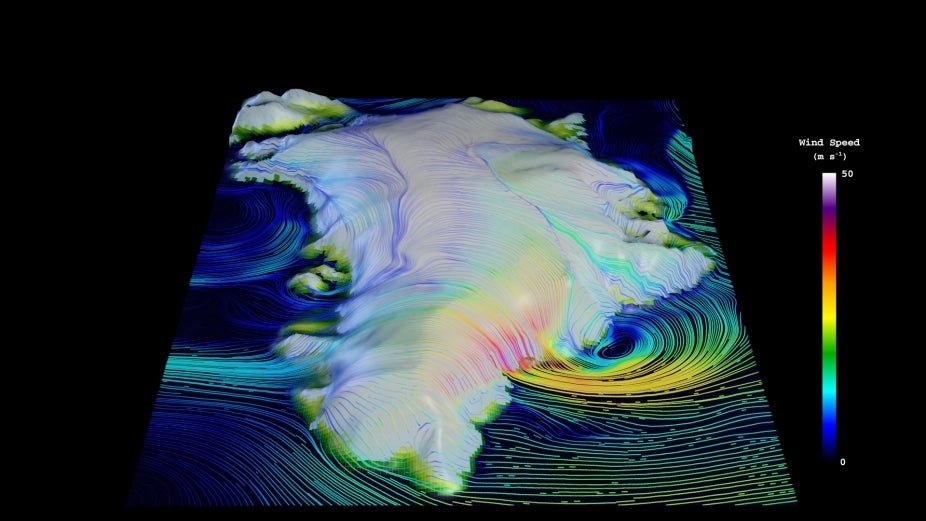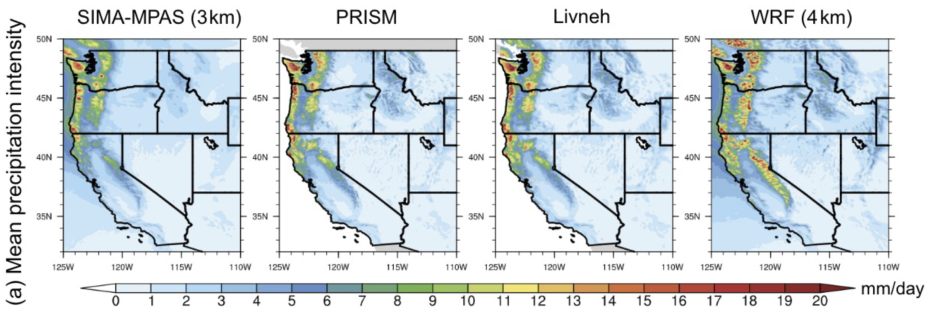Climate Applications
Climate applications are the bread and butter of CESM. The SIMA project is focused on providing resources to carry out climate centered projects, targetting high-resolution simulations using the variable-resolution (VR) options available in CAM (Community Atmosphere Model). CAM contains two dynamical cores that support VR: (1) the hydrostatic Spectral-Element (SE) dynamical core, and (2) the non-hydrostatic MPAS dynamical core (Model for Prediction Across Scales). The hydrostatic approximation is not appropriate for (horizontal) grid spacings less than about 10 km, and therefore kilometer-scale convection-permitting simulations are restricted to the MPAS dynamical core. While the SIMA and CESM projects are jointly responsible for brining MPAS functionality into CESM, at this stage SIMA primarily contributes to advancing climate applications through supporting specific science driven projects (although see CAM-SIMA).
Coupled simulations of the Arctic and the Greenland Ice Sheet.
Lead: Adam Herrington, NCAR
This project is a joint CESM and SIMA activity funded by the National Science Foundation.

Arctic research problems exemplify the need for integrated system tools with their encompassing interactions of the atmosphere and aerosols, the land surface, biogeochemistry, the cryosphere (ice sheets and sea ice), and the ocean. An important line of inquiry here concerns the surface mass budget of the Greenland ice sheet, and understanding the processes that control its evolution will be critical for understandings of sea level response.
Resolving the fine scales that strongly influence Arctic predictability motivates the use of refined mesh models that can deliver high resolution (e.g., 14–28-km grids) where needed. The SE dynamical core is therefore used, coupled to oceanic and sea ice modeling components in CESM, to understand the how model resolution impacts the simulated sea level response to realistic future warming scenarios.
(Herrington et al., 2022, https://doi.org/10.1029/2022MS003192)
Evaluating precipitation prediction using a 3 km refined mesh over the Western United States in CAM-MPAS.
Lead: Xingying Huang, NCAR
This is the first study evaluating and documenting the newly implemented CAM-MPAS functionality in CESM (referred to as SIMA-MPAS in the paper). It uses to 60 km global mesh with 3 km refinement over the Pacific Northwest region. Simulated precipitation rates and snow water equivalent ("snowpack") were found to compare favorably to observations and WRF (see figure below), relative to the 1˚ workhorse configurations in CESM.

(Huang et al., 2022, https://doi.org/10.5194/gmd-15-8135-2022)